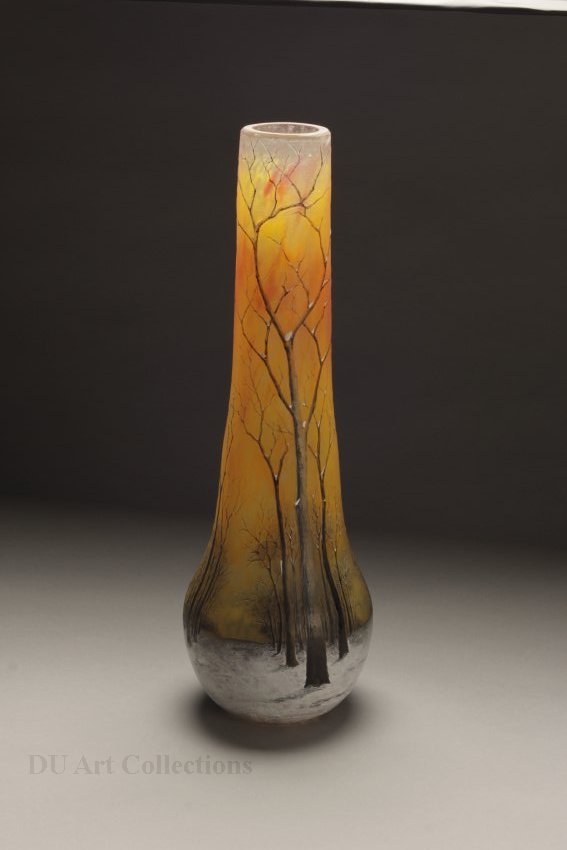Daum Frères Art Nouveau Vase
Daum Frères, Winter Scene, c. 1900. Acid-etched enameled glass
By Lauren Anuszewski, Graduate Class of 2023
Art Nouveau
Art Nouveau (or “new art”) was an international style known by many names: Style Jules Verne, Le Style Métro, Art Belle Époque, and Art fin de siècle in France, Jugendstil in Germany, Stile Floreale in Italy, and Modernismo in Spain.1 This “new style” was developed in the late 1880s as a reaction against the historical revivals, which looked to the past for artistic and architectural design. In search of something new, Art Nouveau artists turned to the natural world, rejecting the order, symmetry, linearity, and regularity of the past, and finding inspiration in the organic, flowing, sinuous lines of flora. Art Nouveau flourished in the decorative arts, like furniture and glassware. Art Nouveau adherents wanted to create greater equity between the “high arts”–like painting and sculpture–and craft, resisting the stratification of the arts and limitations of traditions and expectations. As fast as it arrived, Art Nouveau was considered old-fashioned and largely abandoned for Art Deco style by about 1910-1920. This work demonstrates the free-flowing, asymmetric compositions that characterized Art Nouveau works, and they stand out in contrast to the rigid, orderly, balanced, geometric designs of earlier eras.

Daum Frères, Winter Scene, c. 1900. Acid-etched enameled glass
The Daum Brothers, Auguste (1853-1909) and Antonin (1854-1930), were the sons of a French glassmaker. Their company, Daum Frères, went on to revolutionize the glass-making world. The brothers were fascinated by the works of Emile Gallé. Elder brother Auguste oversaw the finance and administration of their company, giving Antonin artistic freedom. Their glassware is full of colorful natural imagery, with flowing, asymmetrical lines. Their works displayed here show naturalistic landscapes, with the forms of the trees echoing the elongated shape of the vessels. The Daum winter scene with several snow-covered birch trees set against a dark yellow background is probably the most recognizable pattern Daum produced. The later works from between 1910 and 1920 are more abstracted, organic forms, with a dark red color that is dramatic, moody, and intense. By the 1920s, Daum glassworks had shifted towards an Art Deco style, which was influenced by bold, geometric forms and bright colors.
